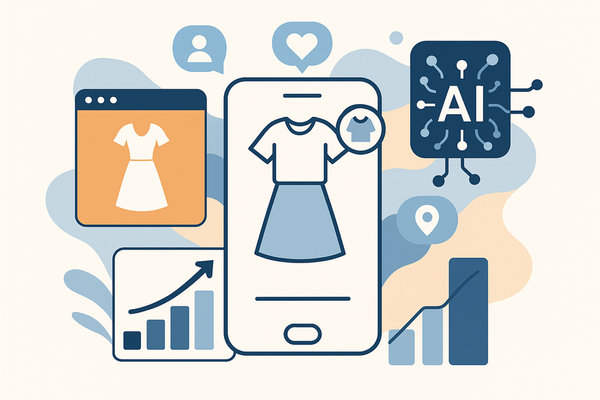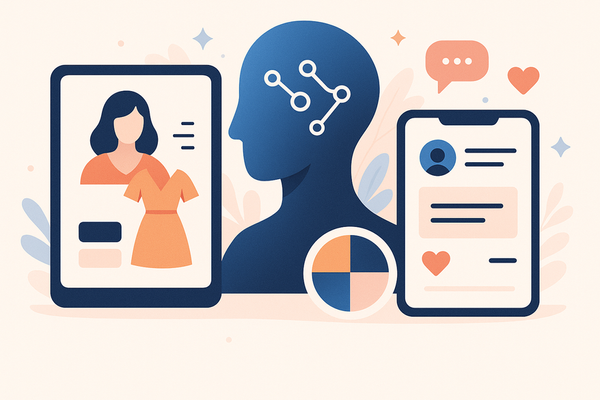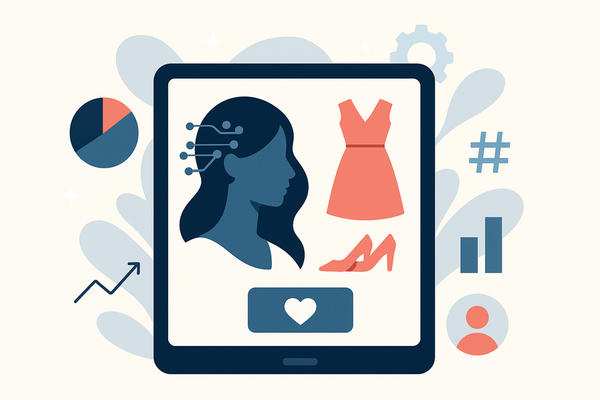Revolutionize Your Beauty Routine: Makeup Application Tips with AI
Discover how AI transforms your beauty routine with innovative makeup application tips using virtual try-ons, personalized products, and interactive tutorials.

Estimated reading time: 7 minutes
Key Takeaways
- AI-powered beauty tools transform how you test and apply makeup.
- Virtual try-ons, personalized recommendations, and interactive tutorials streamline your routine.
- Benefits include enhanced accuracy, customization, and efficiency.
- Challenges involve privacy concerns, over-reliance on technology, and device requirements.
- Future trends promise hyper-personalization, AR integration, and AI-driven diagnostics.
Table of Contents
- Understanding AI in Makeup
- Exploring AI-Powered Makeup Tools
- Step-by-Step Makeup Application with AI
- Benefits and Challenges
- Future Trends in AI for Beauty
- Conclusion
- FAQ
Understanding AI in Makeup
Artificial Intelligence (AI) refers to computer systems that perform tasks requiring human-like intelligence—such as analysis, recognition, and prediction. In makeup, AI combines computer vision, deep learning, and augmented reality to transform how we choose, apply, and experiment with cosmetics.
- Virtual Try-Ons: Real-time simulation that maps products onto your face to preview lipsticks, eyeshadows, and more before purchasing or applying.
- Personalized Recommendations: Machine learning models analyze your skin tone, face shape, and preferences to suggest best-fit products and application techniques (see personalized makeup recommendations for more).
- Step-by-Step Tutorials: Interactive lessons that adjust to your skill level, guiding you through foundational and advanced makeup methods at your own pace.
Advantages of AI-Powered Beauty
- Enhanced Accuracy: AI tools precisely detect facial landmarks to optimize product placement and shade selection.
- Customization: Every routine is tailored to your unique features—skin undertone, complexion, bone structure, and style.
- Innovation & Trends: Instant access to cutting-edge looks and seasonal styles via cloud-based trend analysis.
Experience Example: On my first try using a virtual try-on app, the AI accurately matched my foundation shade under natural daylight. The real-time overlay made it easy to compare textures and finishes before I applied anything.
Exploring AI-Powered Makeup Tools
The beauty tech market offers a range of AI-powered tools—each designed to simplify and enhance your makeup routine.
- Virtual Try-On Apps
- Sephora Virtual Artist: Applies digital makeup in real time using facial-feature detection to map products precisely on your lips, eyes, and cheeks (Sephora transformation revolution).
- L’Oréal’s Makeup Genius: Utilizes advanced computer vision to simulate hundreds of shades and textures in live camera mode.
- AI-Powered Tutorials
- Microsoft Copilot Beauty Routines: Offers on-demand, interactive lessons that adapt as you improve, covering basic application, contouring, and more.
- Perfect365 Smart Lesson: AI-driven video guides that show you exactly where to place and blend products step by step.
- Personalization-Focused Assistants
- Estée Lauder Virtual Makeup Assistant: Analyzes a selfie to recommend skincare-infused foundations and highlight your best facial features (makeup analysis tool).
- Bold Blind Beauty AI Advisor: Customizes product suggestions for sensitive skin, aging concerns, and personal style preferences.
Why These Platforms Stand Out
- Real-World Accuracy: Machine learning fine-tunes recommendations over time based on your feedback and real selfies.
- Integration: Many apps link directly to e-commerce platforms for one-click purchases of AI-selected products.
- Accessibility: No makeup artist needed—anyone with a smartphone can access professional-level guidance.
To further refine your AI-driven beauty insights, try out Maxx Report, which offers personalized makeup analysis and product recommendations.
Step-by-Step Makeup Application with AI
Follow these tips to blend high-tech tools into your everyday routine.
- Choose the Right AI App
- Virtual Try-On: Best for experimenting with shades and finishes.
- Tutorials: Ideal if you need guided lessons or want to learn new techniques.
- Assistants: Perfect for curated product recommendations and personalized routines.
- Capture a Clean, Well-Lit Selfie
- Use natural light or a ring light to reduce shadows.
- Ensure your face fills most of the frame for accurate feature detection.
- Upload or switch to live camera mode for real-time analysis.
- Set Your Skill Level
- Beginner: Focus on foundational steps—foundation, concealer, basic eye look.
- Intermediate: Explore contouring, highlighting, and brow shaping.
- Advanced: Master graphic liners, smoky eyes, and editorial looks.
- Experiment with AI-Recommended Products
- Shade Match: Use AI color analysis to select foundation that suits daylight vs. indoor lighting.
- Product Links: Many apps provide direct purchase links and price comparisons.
- Practice Offline with AI Guidance
- Blend with the tools suggested: beauty blender, brushes, or sponges.
- Focus on feature accentuation—cheekbones, brows, lips—using AI tips.
- Adjust for various environments: office light, evening events, outdoor settings.
Actionable AI-Powered Tips:
- Use AI’s digital color wheel to find complementary eyeshadow and lipstick pairings.
- Follow AI-generated contour and highlight maps for your face shape.
- Turn on voice commands in tutorials to keep your hands free during application.
Benefits and Challenges of AI-Powered Beauty
Benefits of Combining Traditional Makeup with AI
- Personalization: AI creates custom routines based on your features, skin concerns, and style.
- Efficiency: Learn new techniques faster and avoid costly product mistakes.
- Adaptiveness: Apps update with the latest trends, techniques, and product launches.
- Digital Confidence: Practice virtually before stepping out—reduces anxiety when trying bold looks.
Challenges and Limitations
- Privacy Concerns: Apps collect photos and personal data—review privacy policies and opt out of data sharing when possible.
- Over-Reliance on Tech: Excessive dependence on AI may slow the development of manual skills.
- Learning Curve: Less tech-savvy users may struggle with app interfaces and AR features.
- Device Compatibility: Some tools require high-end smartphones or stable internet connections.
Trustworthiness Tip: Always choose apps from reputable brands that follow secure data storage practices and provide transparent cookie settings.
Future Trends in AI for Beauty
The next wave of AI beauty tools promises even deeper personalization and immersive experiences.
Hyper-Personalized Formulations
- Deep Learning for Custom Blends: AI analyzes millions of facial data points to create bespoke foundation, blush, and skincare formulas.
- On-Demand Manufacturing: Brands may 3D-print makeup products tailored to your exact skin chemistry.
AR & Mixed Reality Integration
- Real-Time Interactive Tutorials: Augmented reality overlays guide your brush strokes live on your mirror or phone screen.
- Social AR Filters: Share your AI-generated looks on social media with realistic, shoppable AR lenses.
AI-Powered Skin Diagnostics
- Holistic Beauty Coaching: Future apps could combine dermatology-grade skin scans with makeup advice, recommending serums, sunscreen, and color correctors simultaneously.
- Wellness Integration: AI could suggest lifestyle changes—hydration, sleep, nutrition—alongside your makeup routine.
Accessibility & Inclusion
- Multicultural Shade Libraries: AI will expand inclusive shade ranges that accommodate all skin tones and undertones.
- Voice & Gesture Controls: Hands-free makeup application for users with mobility challenges.
Conclusion
We’ve defined “makeup application tips with AI,” explored AI’s role in modern beauty, and reviewed leading tools like virtual try-on apps, smart tutorials, and personalization assistants. You now have a step-by-step guide for integrating AI into your routine, plus insights on the benefits, challenges, and future trends that will shape the beauty industry.
Ready to revolutionize your makeup game? Download an AI-powered beauty app, follow a guided tutorial, and share your results with friends. Embrace the power of intelligent beauty tech and elevate your routine today.
FAQ
- What is a virtual try-on app?
- A virtual try-on app uses AR and computer vision to overlay makeup products—like lipstick, eyeshadow, and blush—onto your live image, allowing you to preview looks in real time.
- How accurate are AI-based shade recommendations?
- Most modern AI tools analyze your skin tone under different lighting conditions to provide accurate shade matches, but it’s recommended to cross-check in natural light before purchase.
- Do I need a special device for AI makeup apps?
- While many apps work on standard smartphones, some advanced features—like real-time AR overlays—may require a high-end camera and stable internet connection.
- Is my data safe with AI beauty apps?
- Reputable brands implement secure data storage and clear privacy policies. Always review permissions and opt out of data sharing if you have concerns.





